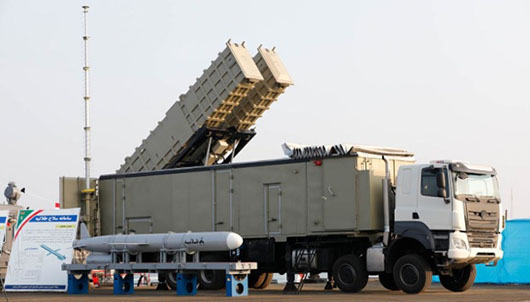FPI / February 28, 2024
By Richard Fisher
Iran has mastered the containerization of long-range solid fuel ballistic and long-range land attack cruise missiles (LACMs), posing a new level of threat from Iran and from its proliferation to its proxies.

Militant groups like Hamas, Hizbullah and the Houthis could conceal such missile containers to conduct surprise strikes in the Middle Eastern region, or against far distant “enemy” countries.
Already a feature long offered by Russia, China and in the last year, North Korea, containerization of ballistic and cruise missiles offers the means to use trucks, trains and ships that carry standard shipping containers, to conduct covert attacks against regional and far more distant enemies.
In 2010 Russia revealed its Novator Club-K, which used a standard 40-foot metal shipping container to house four of its Club anti-ship or land attack cruise missiles, and a small booth for the missile operator.
By 2019 China had revealed its YJ-18C containerized cruise missile system, and in 2023 North Korea revealed a rail-based containerized launch system for its KN-23 solid fuel short-range ballistic missile.
Iran containerized missiles started to appear in December 2023 when Iranian state media revealed that a container on a truck carried two of its Talaiyeh long-range LACMs, a container that could also be used by a rail or ship carrier.
In late December 2023, Iranian Navy Commander, Adm. Shahram Irani said the Talaiyeh anti-ship cruise missile had a range of 1,000 kilometers.
It also carries a 400-kilogram warhead, perhaps sufficient to carry a version of the 400-500 kilogram North Korean Hwasan-31 tactical nuclear warhead.
In the 1990s China, North Korea and Iran obtained Russian Kh-55 strategic cruise missile technology from Ukraine, which assisted each in their indigenous long-range LACM programs.
It is likely that China, which first succeeded in developing long range LACMs, then assisted with Iran’s and North Korea’s LACM programs.
Full Report . . . . Current Edition . . . . Subscription Information
Free Press International
